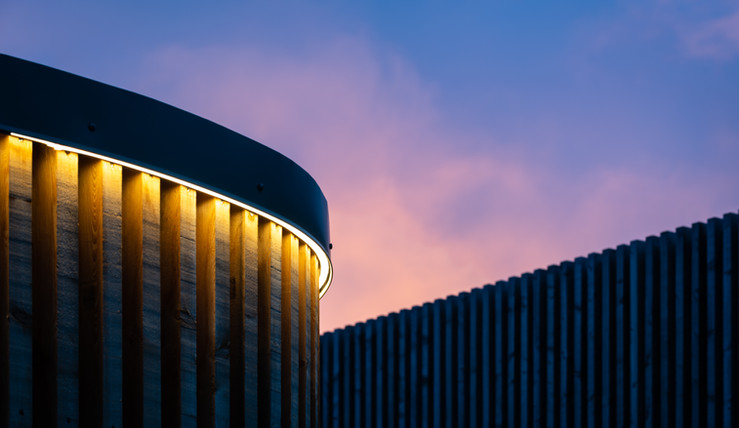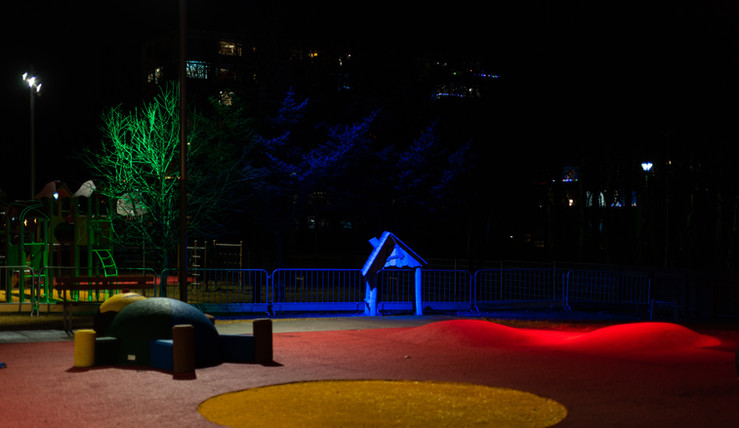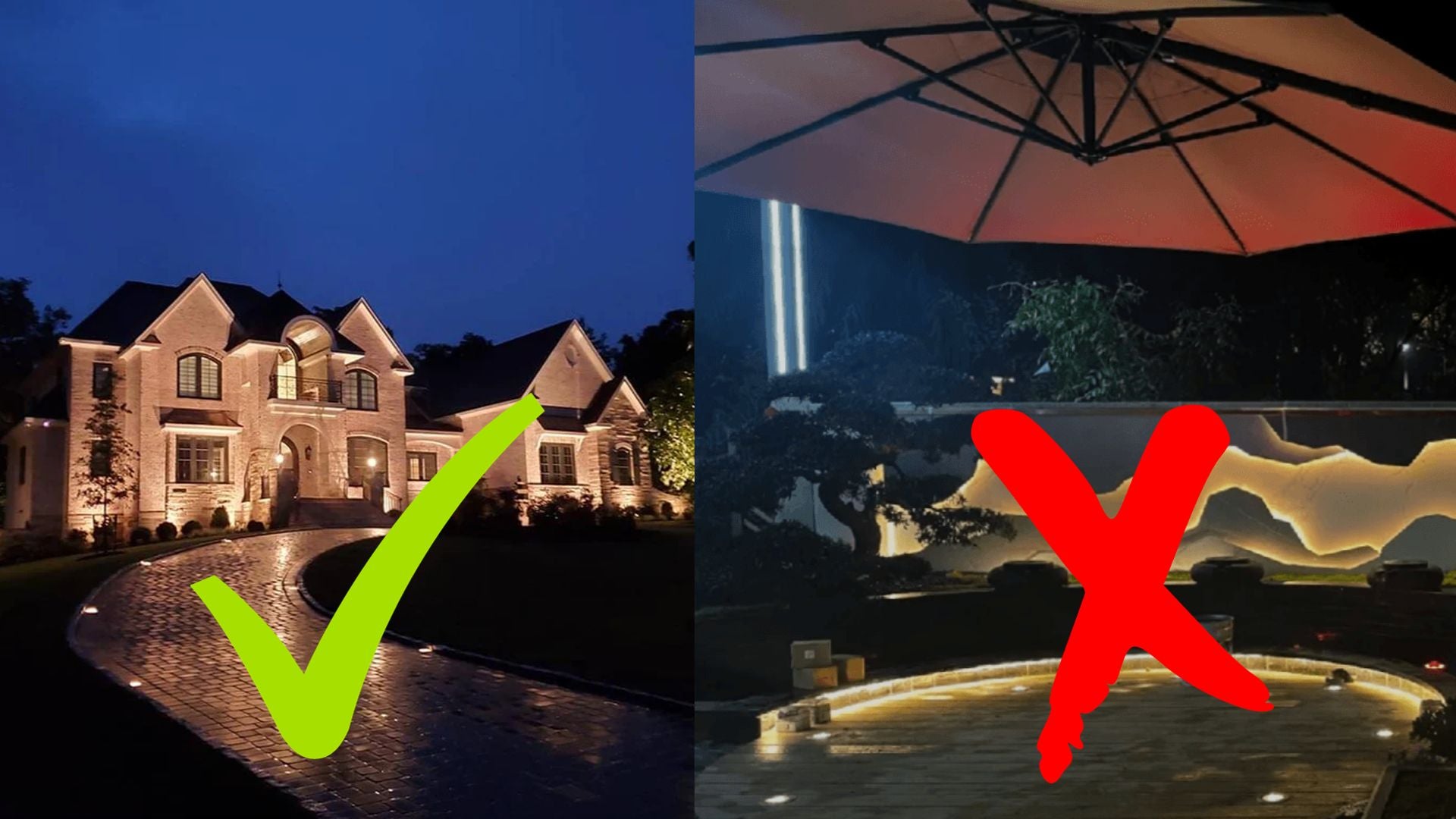Info Leonlite
10-21-2023
Iceland's Brákarborg Kindergarten: A Beacon of Green Architecture and Innovative Lighting Design

Iceland's Brákarborg Kindergarten: A Beacon of Green Architecture and Innovative Lighting Design
In the heart of Iceland, the Brákarborg Kindergarten stands as a testament to sustainable architecture. Housing up to 120 children, this institution is more than just a place of learning—it's a showcase of how old structures can be transformed into eco-friendly, modern marvels. Teaming up with Liska, the kindergarten boasts state-of-the-art lighting design, ensuring a warm, comfortable, and vibrant environment for the kids. Dive into this article as we unpack the facets of this project, from its green architectural features to the intricacies of its lighting design.
* Prices seem high? Could be multi-unit packs. Check your cart for details.
Table Of Content
- The Transformation of Brákarborg Kindergarten and the Rise of Green Architecture
- Outdoor Lighting: Bridging Nature and Architecture
- The Bigger Picture: Sustainable Lighting in Urban Development
- Conclusion
The Transformation of Brákarborg Kindergarten and the Rise of Green Architecture
Once a community center in Kleppsveg, the building that now houses the Brákarborg Kindergarten underwent a significant transformation. The vision was clear: to create a space that not only nurtures young minds but also stands as a symbol of sustainable development in the heart of Iceland. The architects, Archie and Canon, took on this challenge, ensuring that every design decision was rooted in eco-friendly solutions. Their efforts didn't go unnoticed. The project was honored with the "Green Shovel Award," a recognition given to structures built with a keen focus on ecological and sustainable development.
But the Brákarborg Kindergarten is not an isolated case. All over the world, the urgency of climate change and the significant CO2 emissions from buildings (almost 40% of global annual emissions) have pushed architects and designers to rethink how we construct our living and working spaces. Sustainable architecture trends, such as biophilic design, which introduces organic materials, patterns, shapes, and greenery into built environments, are becoming mainstream. Such designs not only reduce carbon emissions but also foster a deeper connection between people and nature.
In the case of Brákarborg, it wasn't just about the building's structure; the lighting played a pivotal role in bringing this vision to life. The use of natural light, combined with state-of-the-art lighting solutions, ensures that the kindergarten is not only energy-efficient but also provides a nurturing environment for its young inhabitants.

* Prices seem high? Could be multi-unit packs. Check your cart for details.
Outdoor Lighting: Bridging Nature and Architecture
The Brákarborg Kindergarten, while a marvel of interior design and sustainable architecture, also stands out for its innovative approach to outdoor lighting. Outdoor lighting plays a crucial role in green architecture, especially in places like Iceland where daylight hours can be limited during certain times of the year.
Liska's lighting design for the kindergarten's exterior was meticulously planned to ensure safety, aesthetics, and energy efficiency. By using LED lights, which consume significantly less energy and have a longer lifespan than traditional bulbs, the kindergarten reduces its carbon footprint. Moreover, these lights are strategically placed to illuminate pathways, play areas, and building entrances, ensuring that children and staff can move safely during the darker hours.
But it's not just about functionality. The outdoor lighting design also complements the building's architecture and the surrounding natural landscape. Soft, ambient lighting highlights the building's green features, such as its green roofs and walls, making them visible even at night. This not only showcases the kindergarten's commitment to sustainability but also creates a serene and inviting atmosphere.
Furthermore, the trend of integrating biophilic design into architecture has led to the incorporation of more green spaces in urban areas. Proper outdoor lighting ensures that these green spaces, whether they're gardens, patios, or terraces, can be enjoyed both day and night. It enhances the beauty of the vegetation, attracts pollinating insects, and promotes urban biodiversity.

The Bigger Picture: Sustainable Lighting in Urban Development
The success of Brákarborg Kindergarten's lighting design is a microcosm of a larger trend in urban development. As cities globally grapple with the challenges of urbanization, pollution, and energy consumption, the focus on sustainable lighting solutions has never been more critical.
In urban environments, where artificial light often outshines the stars, the importance of eco-friendly outdoor lighting extends beyond energy conservation. Light pollution, a side effect of over-illumination, has adverse effects on both human health and wildlife. By adopting lighting solutions that minimize glare and reduce skyglow, urban areas can mitigate these negative impacts.
Moreover, the move towards "smart cities" has further emphasized the role of sustainable lighting. Advanced lighting systems, equipped with sensors and integrated with city-wide networks, can adjust brightness based on natural light availability and activity levels. This not only conserves energy but also enhances safety and security in public spaces.
Brákarborg Kindergarten's approach to lighting, both indoor and outdoor, serves as an inspiration. It's a testament to how thoughtful design, combined with the latest in lighting technology, can create spaces that are safe, beautiful, and in harmony with nature. As more urban projects adopt these principles, we move closer to a future where cities are not just centers of commerce and culture but also bastions of sustainability and ecological responsibility.
* Prices seem high? Could be multi-unit packs. Check your cart for details.
Conclusion
The Brákarborg Kindergarten, with its harmonious blend of green architecture and innovative lighting design, stands as a beacon for what's possible in sustainable development. Its success is not just in its design but in the message it sends: that with careful planning, collaboration, and a commitment to the environment, we can create spaces that are both functional and eco-friendly.
As we look to the future, the lessons from Brákarborg are clear. Sustainable lighting, both indoor and outdoor, is more than just an architectural feature; it's a necessity. In a world grappling with climate change and dwindling natural resources, every decision we make, from the buildings we construct to the lights we install, has a lasting impact.
But there's hope. With projects like Brákarborg leading the way, we're seeing a shift in how we approach urban development. It's a move towards more thoughtful, sustainable designs that prioritize the well-being of its inhabitants and the planet. As we continue to innovate and push the boundaries of what's possible, we're not just building for today; we're lighting the way for future generations.

FREQUENTLY ASKED QUESTIONS (FAQS)
Author

INFO-Leonlite
Tags
LED Lights
Outdoor lighting
Sustainable architecture
Sustainable urban development















